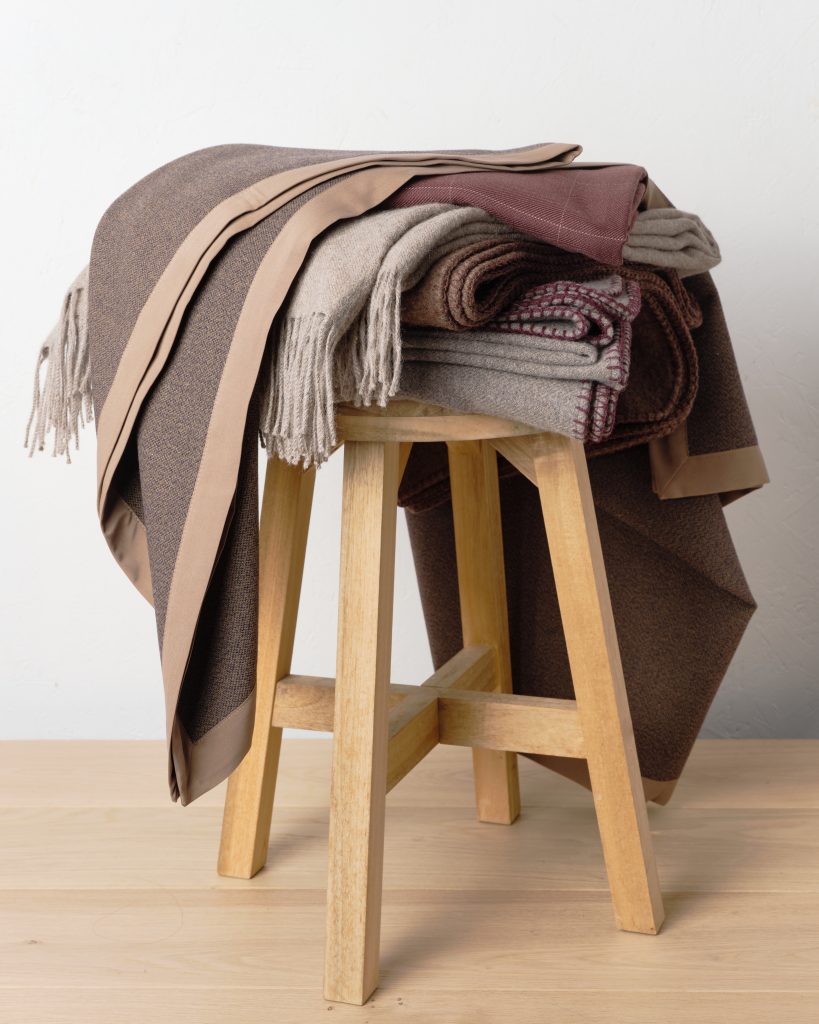Wonder Wool
As autumn brings its seasonal changes and a chill in the air calls for cosy knitwear, the month of October also marked Wool Month—an annual initiative by the Campaign for Wool that celebrates this remarkable natural fibre. Dedicated to promoting wool’s many benefits and its role as a sustainable, renewable material, it is the perfect time for us to reflect on how deeply this fibre is woven into our company’s heritage—and how it continues to inspire our future.
Wool is one of the oldest known textile materials, with its roots in the UK stretching back thousands of years. Early Britons kept sheep for their fleece, using simple woven cloth to create garments and blankets perfectly suited to the local climate. By the Middle Ages, wool had become one of the nation’s most valuable exports, helping to shape the British economy. The Industrial Revolution brought transformative change to the industry, as new machinery and automated processes revolutionised production—turning wool manufacturing, particularly in Yorkshire, into a thriving powerhouse.
Founded in 1863, John Horsfall began producing woollen cloth in the very heart of Yorkshire’s textile industry. For many years, we manufactured woollen blankets for the domestic market, and during the Second World War, our fabrics were considered vital to the war effort. Our workers even received special dispensation to remain in the mill to keep production running, rather than being called to serve.
The 20th century brought new challenges and opportunities to the wool industry. The introduction of synthetic fibres such as polyester and nylon, along with changing home furnishings, reshaped consumer habits. The arrival of duvets in the 1960s gradually replaced traditional layers of sheets and woollen blankets on the bed. At the same time, the rise of commercial aviation opened new horizons. By the 1970s, John Horsfall had diversified into the airline sector, supplying woven blankets to carriers including British Airways, Kuwait Airways, Air Mauritius, and Malaysia Airlines.
While many airlines eventually shifted to synthetic materials like modacrylic and polyester—valued for easier care and lower costs—wool remained a hallmark of luxury, gracing first-class cabins and private jets. Yet the timeless advantages of wool are far too significant to overlook.
Wool is one of the most versatile and sustainable natural fibres available. Its unique structure allows it to breathe, helping regulate body temperature by keeping you warm in the cold and cool in the heat. Naturally moisture-wicking, it absorbs and releases humidity without feeling damp—ideal for comfort whether worn or used in bedding. It is also odour-resistant, with natural properties that discourage bacterial growth, and it maintains its shape and appearance even after prolonged use—qualities perfectly suited to the demands of an airline cabin environment. Beyond these practical benefits, wool is both renewable and biodegradable, making it a truly sustainable textile choice.
At John Horsfall, we are proud to honour wool—not only as a cornerstone of our history but as a fibre that continues to shape our future and can enhance comfort and sleep quality in the cabin environment. We’ve invested in the development of an exciting new range of wool-based airline products, with the first due to take off any day now. Stay tuned as we continue to champion this incredible material and share our next chapter in the story of this wonder fibre.
Detail. Design. Delight.



